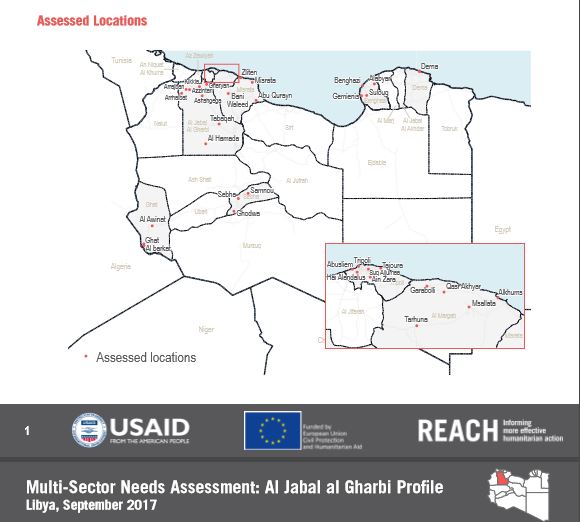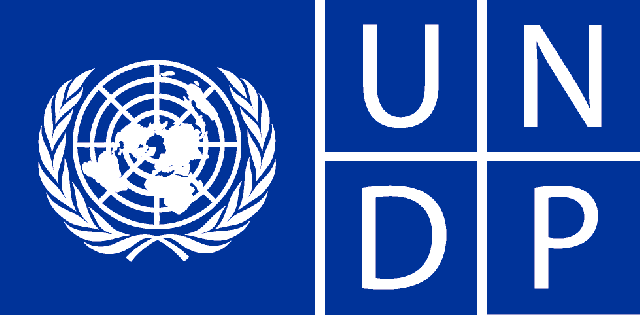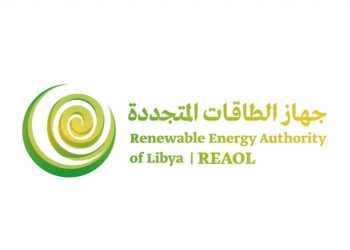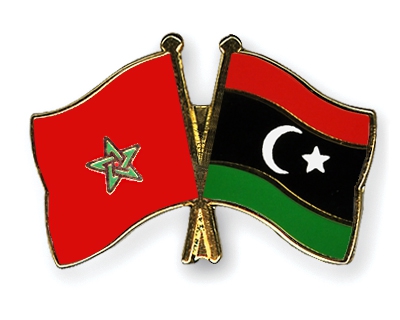By Sami Zaptia.
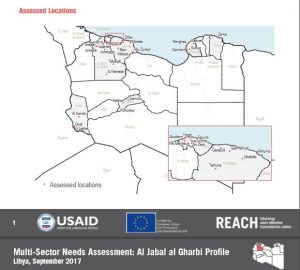
London, 12 October 2017:
A multisector needs assessment report was published in September by the Swiss-based NGO REACH which was conducted across Libya in order collect date to improve international humanitarian aid distribution. The survey provides informative data backing much reported information on the internally displaced and returnees. It also confirms general well-known problems with access to cash at banks and to electricity and fuel.
REACH is a joint initiative of two international non-governmental organisations, ACTED and IMPACT Initiatives, and the United Nations Operational Satellite Applications Programme (UNOSAT). REACH was created in 2010 to facilitate the development of information tools and products that enhance the capacity of aid actors to make evidence-based decisions in emergency, recovery and development contexts.
The 33-page report says that Libya has experienced several waves of conflict since 2011, renewed nationwide in 2014 and periodically in several regions, that affected millions of people, both displaced and non-displaced. In response to a lack of recent data on the humanitarian situation in Libya, the REACH report says that it conducted two rounds of multi-sector data collection in June and August 2017 to provide timely information on the needs and vulnerabilities of affected populations.
The report says that a total of 2,978 household (HH) surveys were completed across 8 Libyan districts, chosen to cover major population centres and areas of displacement.
Data in the districts of Tripoli was collected in August: 413 HH surveys were conducted following a sampling allowing for statistically generalisable results for all assessed displacement categories with a confidence level of 95% and a margin of error of 10% (unless stated otherwise). Findings have been disaggregated by displacement status where the differences in responses among these groups were significant.
The report distinguished between the non-displaced, the internally displaced (IDPs) and returnees. The assessment results for Tripoli, the area with the largest population concentration estimated by the report at 1,177,500 people, said that the average family size was 5.5 people per HH and 35.3 percent of HH reported a chronically ill member. Over 65 percent of the population was recorded between the ages of 18-64.
The top three needs were cash/income for non-displaced, shelter for IDPs and energy (electricity/fuel) for returnees. As high as 32.2 percent of non-displaced, 17.1 of IDPs and 31.8 of returnees ‘‘did not need assistance’’ the assessment reported.
More than half of IDPs (55 percent) were displaced once, 17.1 percent twice and 27.9 percent three times or more. For returnees, 78 percent were displaced once, 20.2 percent twice and 1.8 percent three times or more. The top ‘‘push factor’’ for IDPs moving was reported as ‘‘insecurity’’.
Those surveyed reported that the top two challenges to receiving their income was an ‘‘irregular salary’’ followed by a ‘‘dysfunctional bank’’.
The non-displaced reported 23 percent who were unable to withdraw cash while the IDPs reported 33 percent and the returnees reported 12 percent. The lack of an income was supplemented by all three groups by one of: savings, borrowing, selling gold or purchasing on credit.
Over 38 percent of HH income was reported to have been spent on food with 60 of the non-displaced, 61.3 percent of IDPs and 69.7 percent of returnees reporting having access to subsidized food. Dairy, tuna and pasta being the top three for all three groups. Over 61 percent of Libyans reported drinking bottled water.
Power cuts of 0-3 hours were reported by 42.7 percent, 56 percent reported 4-7 hours and 1.3 percent reported power cuts of 8-12 hours.
Finally, the report said 100% of those surveyed had at least one HH member with ‘’signs of psychological distress’’.
For a detailed breakdown of results for the various regions the full report can be accessed here: www.reach-initiative.org
